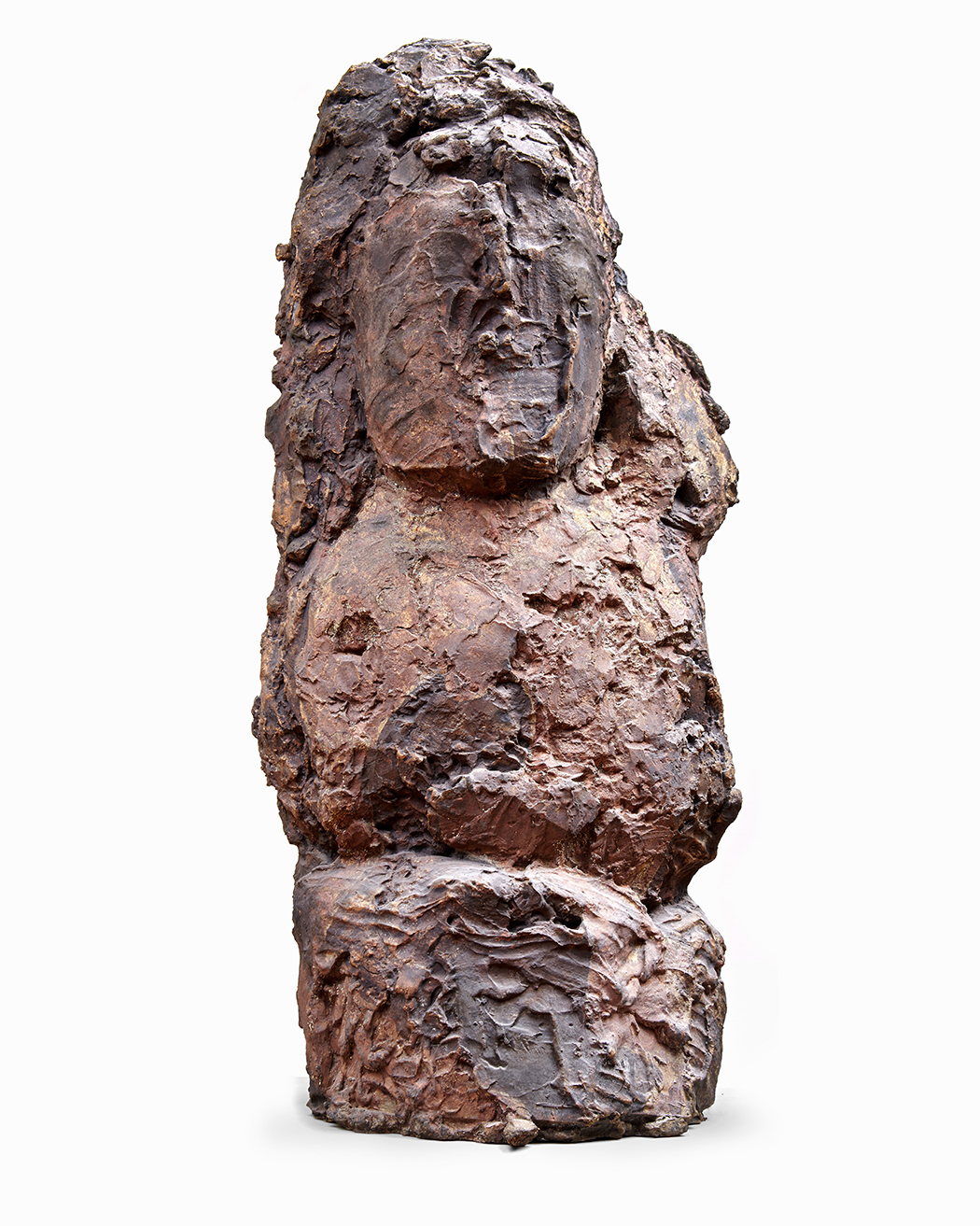Hans Josephsohn was born in 1920 in Königsberg (now Kaliningrad, Russia), in eastern Prussia. While he earned an art studies scholarship in Florence in 1937, his Jewish origins made it necessary for him to flee Italy for Switzerland. He arrived in Zurich in 1938, where he became a student of sculptor Otto Müller. He set up his first studio in 1943 and started exhibiting his work in 1964 in various Swiss towns, including Zurich, Schaffhausen and Aarau. That same year he became a Swiss citizen.
In 1992, architect Peter Märkli built La Congiunta museum specifically for his work, a sober concrete building erected in the middle of nature in Giornico (Tessin), where around thirty of his sculptures are still housed.
In the late 1990s, Josephsohn’s work started attracting the attention of a broader audience. The Stedelijk Museum in Amsterdam presented a major retrospective of his work in 2002. The following year he received the Art Prize of the City of Zurich, and the Kesselhaus Josephsohn opened in St. Gallen, an exhibition space, museum and workshop-warehouse for presenting and conserving the sculptor’s work.
Universally recognized for his vital contribution to visual art, since the 2000s, his work has been acquiring international renown, as evinced by the many exhibitions of his work abroad, for example at the Kolumba Diocesan Museum in Cologne in 2005, the Palais de Tokyo in Paris in 2007 and the Museum für Moderne Kunst in Frankfurt in 2008. The visibility of his work has been growing ever since. It is represented in several public collections: at the Aargauer Kunsthaus, the Kunsthaus Zurich, the Stedelijk Museum Amsterdam and the Staatliche Museen zu Berlin. Hans Josephsohn died in Zurich in 2012. Today he is considered one of the most important sculptors of his time.
In 1992, architect Peter Märkli built La Congiunta museum specifically for his work, a sober concrete building erected in the middle of nature in Giornico (Tessin), where around thirty of his sculptures are still housed.
In the late 1990s, Josephsohn’s work started attracting the attention of a broader audience. The Stedelijk Museum in Amsterdam presented a major retrospective of his work in 2002. The following year he received the Art Prize of the City of Zurich, and the Kesselhaus Josephsohn opened in St. Gallen, an exhibition space, museum and workshop-warehouse for presenting and conserving the sculptor’s work.
Universally recognized for his vital contribution to visual art, since the 2000s, his work has been acquiring international renown, as evinced by the many exhibitions of his work abroad, for example at the Kolumba Diocesan Museum in Cologne in 2005, the Palais de Tokyo in Paris in 2007 and the Museum für Moderne Kunst in Frankfurt in 2008. The visibility of his work has been growing ever since. It is represented in several public collections: at the Aargauer Kunsthaus, the Kunsthaus Zurich, the Stedelijk Museum Amsterdam and the Staatliche Museen zu Berlin. Hans Josephsohn died in Zurich in 2012. Today he is considered one of the most important sculptors of his time.

